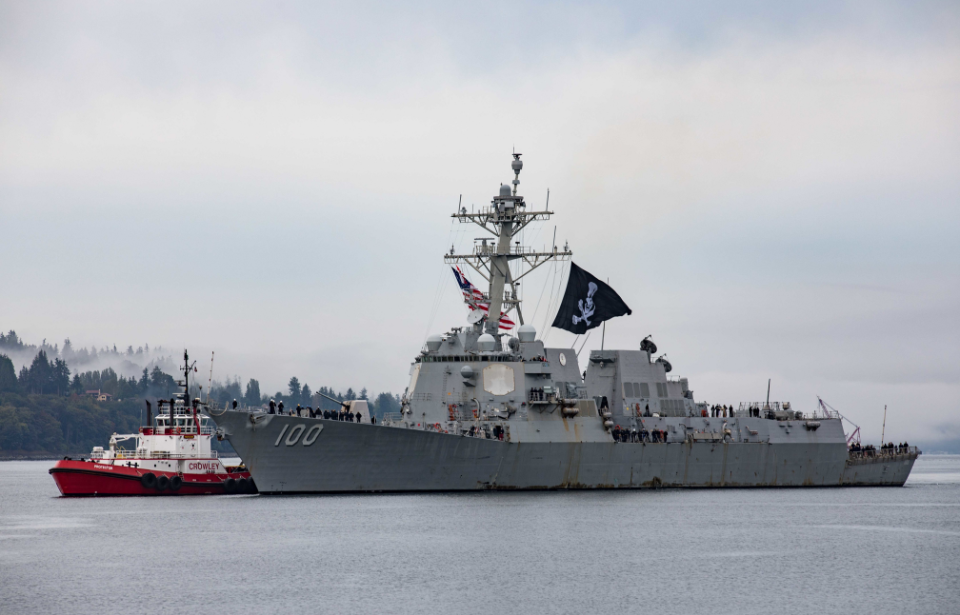The USS Kidd (DDG-100) is an Arleigh Burke-class guided-missile destroyer currently serving with the US Navy. Named for Rear Adm. Issac C. Kidd, who lost his life during the attack on Pearl Harbor, the vessel is rather unique. If you look close enough, you’ll notice that the ship flies a rather unusual – and unexpected – flag: the Jolly Roger.
Isaac C. Kidd
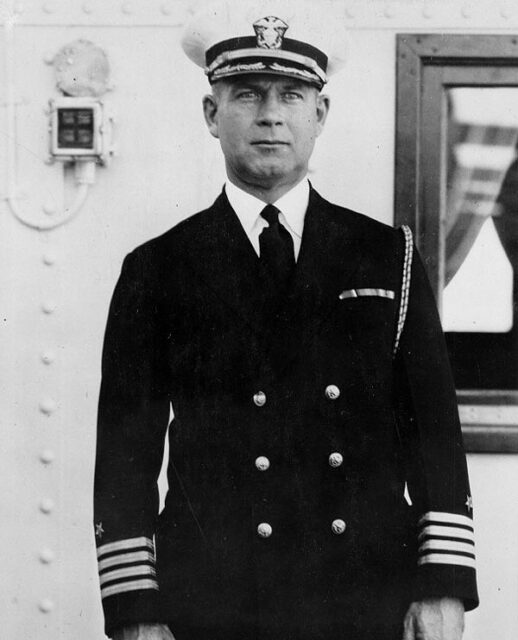
Isaac C. Kidd’s military service began in 1902, when he enlisted in the US Naval Academy. Six years later, he was commissioned as an ensign and went on to serve onboard several vessels, eventually becoming the Aide and Flag Secretary to the Commander-in-Chief, Pacific Fleet. He followed this up by becoming an instructor at his alma mater.
When the First World War broke out, Kidd was stationed aboard the USS New Mexico (BB-40), to defend against the possibility of Mexico joining the conflict. As time moved into the interwar period, he held a variety of positions, including the Chief of Staff to the Commander, Base Force, US Fleet and the commander of Destroyer Squadron One, Scouting Force.
When the Japanese launched their surprise attack on Pearl Harbor on December 7, 1941, Kidd was the Commander of Battleship Division One and the Chief of Staff and Aide to the Commander, Battleship Battle Force. That morning, he was aboard the USS Arizona (BB-39), and he refused to leave the vessel in the face of danger.
As the Japanese continued their assault, Kidd “courageously discharged his duties as senior officer present afloat until the U.S.S. Arizona, his flagship, blew up from magazine explosions and a direct bomb hit on the bridge which resulted in the loss of his life.” He was among the 1,177 crewmen who lost their lives aboard the battleship and his body was never recovered. For his bravery, he was posthumously awarded the Medal of Honor.
Along with the distinction, Kidd received the honor of having the Fletcher-class destroyer USS Kidd (DD-661) named for him, along with a dedicated class of guided-missile destroyers, led by the USS Kidd (DDG-993). Today, his name continues to serve with the Navy, thanks to the USS Kidd (DDG-100).
USS Kidd (DDG-100) specs
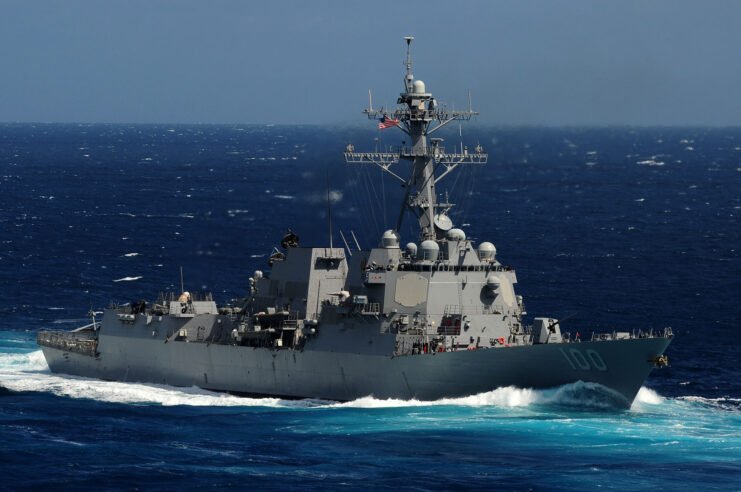
The USS Kidd has a displacement of 9,200 tons and is powered by four General Electric LM2500-30 gas turbines and two shafts, which give the guided-missile destroyer a top speed of over 30 knots. She has the capacity to house a complement of 380 officers and enlisted men, as well as two Sikorsky MH-60R Seahawks.
In terms of armament, Kidd is prepared to face just about any threat. She’s equipped with the following:
- 20 mm Phalanx close-in weapon system (CIWS)
- Four M2 Browning machine guns
- 127 mm 5-inch/62 Mk 45 Mod 4 lightweight gun
- Two 25 mm Mk 38 Machine Gun Systems (MGS)
On top of these, the vessel is also armed with an Optical Dazzling Interdictor, Navy (ODIN); the Mk 41 Vertical Launching System (VLS), capable of launching such projectiles as the BGM-109 Tomahawk and the RIM-156 Surface-to-Air Missile; and two Mk 32 triple torpedo tubes that can fire Mk 46, 50 and 54 Lightweight Torpedoes.
Operational service
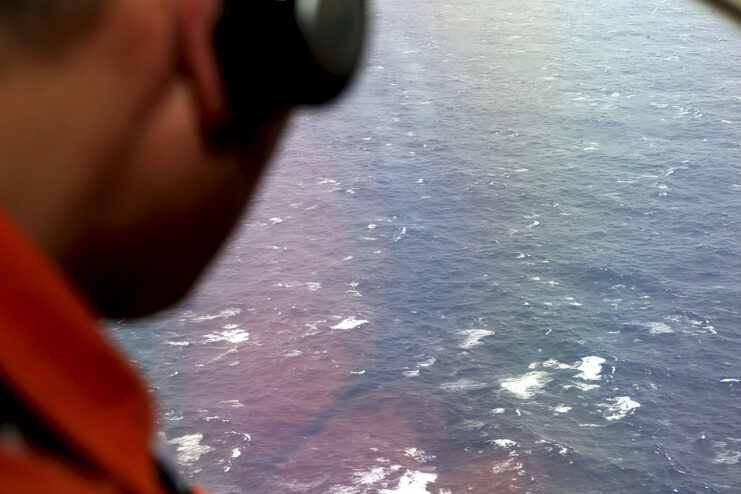
Some 11 years after the guided-missile destroyer was ordered, the USS Kidd was commissioned into service with the US Navy. The ship experienced some delays during her final outfitting as a result of Hurricane Katrina, which slammed into the Mississippi Gulf Coast, where the shipyard was located. This led to the vessel being drydocked to undergo repairs.
The most interesting of Kidd‘s deployments occurred in 2012 and 2014. The first saw her participate in the rescue of the 13-man crew of the Iranian fishing vessel Al Molai, which had been captured by Somali pirates. Two years later, in March 2014, she was sent to the South China Sea to participate in the search for missing Malaysian Airlines Flight 370, along with the USS Pinckney (DDG-91). She was later transferred to the Indian Ocean upon evidence being found there.
Fans of the Transformers franchise will also know that Kidd made a cameo in the 2009 film, Transformers: Revenge of the Fallen. The vessel is currently serving as part of Destroyer Squadron 1, Carrier Strike Group 1, led by the Nimitz-class aircraft carrier USS Carl Vinson (CVN-70).
Why does the USS Kidd (DDG-100) fly the Jolly Roger?
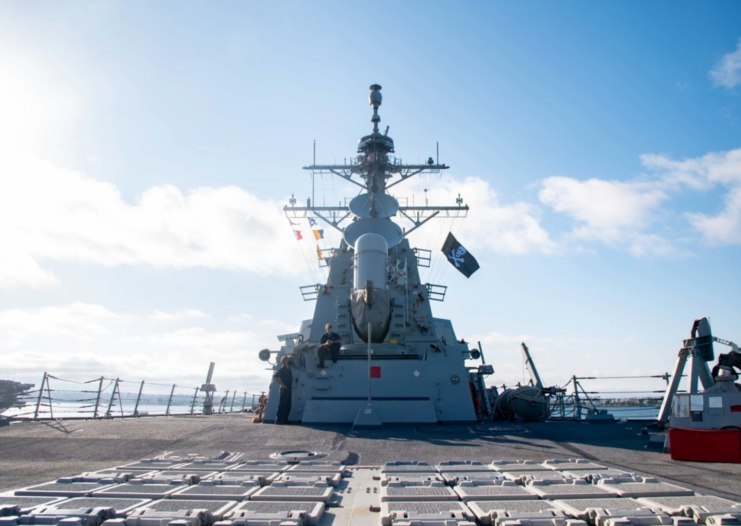
The most interesting thing about the USS Kidd is that the vessel flies the Jolly Roger – in fact, she’s the only warship authorized to do so. This begs the question: why is the guided-missile destroyer allowed to showcase a flag long associated with piracy? History is where the answer lies.
The Jolly Roger, for those who are unaware, dates back to the piracy activity that occurred in the Caribbean and Atlantic during the 17th and 18th centuries, with the skull and crossbones indicating a vessel was bad news. It wasn’t until the First World War that it began being used for other purposes, with the British Royal Navy submarine HMS E9 hoisting it after sinking the German battlecruiser SMS Hela.
Before long, the Jolly Roger was being used to signify a host of achievements, including a “perfect” deployment.
That being said, Kidd is able to fly the flag for a different reason. Following the commissioning of the first USS Kidd in 1943, the vessel’s crew adopted 17th-century Scottish Capt. William Kidd as their mascot, known for both his piracy and working alongside the French to hunt pirates (talk about an oxymoron). He was also nicknamed “Cap,” just like Isaac C. Kidd.
More from us: USS Gerald R Ford: The World’s Largest and Most Advanced Aircraft Carrier
Want War History Online‘s content sent directly to your inbox? Sign up for our newsletter here!
With the support of Inez Kidd, the Medal of Honor recipient’s wife, the destroyer’s crew received permission to both fly the Jolly Roger and paint it on the vessel’s smokestack. When the second Kidd was commissioned in 1981, it inherited this approval, which is also why the current iteration of the vessel is also allowed to fly the flag.
